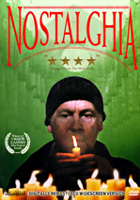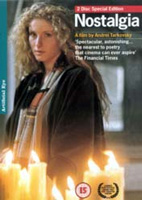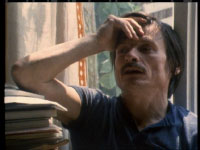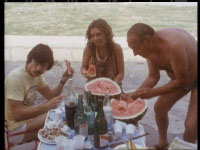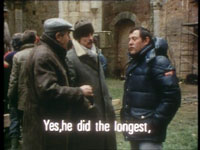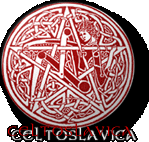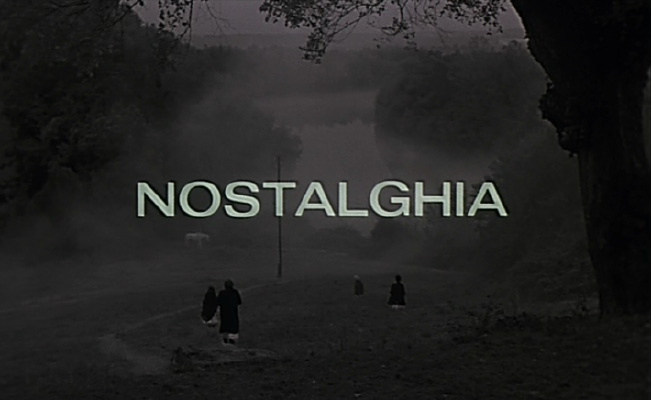
Nostalghia
by Andrej Tarkovskij

Italy / USSR 1983
|
Director:
|
Andrej Tarkovskij | |
|
Producer:
|
Francesco Casati | |
|
Executive Producer:
|
Lorenzo Ostuni, Renzo Rossellini, Manolo Bolognini | |
|
Production Companies:
|
RAI Rete 2 / Opera Film Produzione (Roma) / Sovin Film (Moskva) | |
|
Screenplay:
|
Andrej Tarkovskij, Tonino Guerra | |
|
Cinematographer:
|
Giuseppe Lanci (35 mm Technicolor, 1.66:1) | |
|
Editor:
|
Amedeo Salfa, Erminia Marani | |
|
Music Score:
|
Claude Debussy, Richard Wagner, Ludwig van Beethoven, Giuseppe Verdi | |
|
Music Director:
|
Gino Peguri | |
|
Production Designer:
|
Andrea Grisanti | |
|
Set Designer:
|
Mauro Passi | |
|
Costumes:
|
Lina Nerli Taviani | |
|
Sound:
|
Remo Ugolinelli | |
|
Assistant Directors:
|
Norman Mozzato, Larisa Tarkovskaja | |
|
Special Effects:
|
Paolo Ricci | |
|
Cast:
|
Oleg Jankovskij (Andrej Gorčakov), Domiziana Giordano (Eugenia), Erland Josephson (Domenico), Patrizia Terreno (Gorčakov's Wife), Laura de Marchi (Chambermaid), Delia Boccardo (Domenico's wife), Alberto Canepa (Farmer), Milena Vukotic (Civil Servant)
|
|
|
Runtime:
|
125 min | |
|
Premiere:
|
May 1983 (Cannes Film Festival) Filming Locations: Rome; Bagno Vignoni (Italy) Production Dates: November 1982 - March 1983 |
|
|
Awards:
|
Cannes Film Festival 1983 Best Director Andrej Tarkovskij (Tied with Robert Bresson for L'Argent) FIPRESCI Award Andrej Tarkovskij Nominated Golden Palm Andrej Tarkovskij |
|
"... Highly cerebral, beautifully realized, and symbolically obscure, Nostalghia is a cinematic abstract of spiritual hunger. Indeed, Andrei's indefinite journey, the church supplicants, and Domenico's final incomprehensible act, manifest this innate longing. Note the final scene where Andrei shields the precariously lit candle by opening his overcoat. It is a symbolic revelation of the soul–the struggle against the extinguishing of the spiritual flame–that inevitably redeems him. But it is an ominous closure, as muted colors now suffuse the Italian streets, tainting them with the same melancholic longing that consumes him. Tarkovsky filmed Nostalghia in exile and dedicated the film to the memory of his mother. It is a threnodic film that mourns an irretrievable past and an uncertain future.
— Acquarello, Strictly Film School "... The final sequence of Nostalghia is one of the most captivating ever put on film. The viewer becomes completely swept away by Tarkovsky's world where the elements reign supreme—fire and water are everywhere. The atmosphere Tarkovsky creates is one of constantly dripping water, unsettling mists, and dew seeping through the eternally damp walls. Coupled with these memorable visuals is a remarkable highlighting of sounds (a job admirably performed by Remo Ugolinelli) such as the echoing drip of water or the swirling of the drafts." "... Eine mit vollendeter Meisterschaft inszenierte Traumreise durch die Bruchstellen der abendländischen Kultur - mit suggestiven Bildvisionen, die von einem dicht geflochtenen Netz religiöser und literarischer Querverweise kommentiert werden." "... Ich wollte hier von der russischen Form von Nostalgie erzählen, von jenem für unsere Nation so spezifischen Seelenzustand, der in uns Russen aufkommt, wenn wir weit weg von der Heimat sind. Hierin sah ich, wenn man so will, meine patriotische Pflicht, so wie ich diese selbst empfinde und begreife. Ich wollte von der schicksalhaften Bindung der Russen an ihre nationalen Wurzeln, ihre Vergangenheit und Kultur, an Heimaterde, Freunde und Verwandte sprechen, über jene tiefe Bindung, von der sie ihr ganzes Leben lang nicht loskommen, gleich, wohin sie das Schicksal verschlägt. ... In Italien drehte ich einen Film, der zutiefst russisch ist." "... Andrei used to tell me that cinema uses time like a narrative element, while the photography normally remains constant for the duration of a sequence. It is precisely time that the ‘dynamic photography’ exploits to render a different consistency to the film. An example is the atmospheric conditions within nature: if during a cloudy day the sun comes out at a certain moment this will modify the condition of the light. In an interior space if someone enters a dark room and turns on the light this will change the condition of the light. However, this is all tied to precise actions. This discourse is amplified in Nostalghia, where in addition to variations in natural light were added variations which correspond to emotional motivation rather than any sense of logic. Nostalghia.com - An Andrei Tarkovsky Information Site |
Fox Lorber NTSC Region 0 vs. Artificial Eye PAL (UK) Region 2
|
|
|||
|
Distribution:
|
Fox Lorber Home Video Region 0 (North America) |
Artificial Eye Film Company Region 2 (UK) 2 Discs |
|
|
Runtime:
|
125:28 min | 120:29 min (+ 4% PAL Speedup = 125 min) | |
|
Video:
|
1.63:1/4:3 Letterboxed WideScreen Average Bitrate: 7.59 mb/s, 6.95 GB NTSC 720x480 29.97 f/s |
1.76:1/16:9 Average Bitrate: 4.49 mb/s, 3.96 GB PAL 720x576 25.00 f/s |
|
|
Audio:
|
Italiano/Russkij Dolby Digital 2.0 Mono | Italiano/Russkij MPEG-2 2.0 | |
|
Subtitles:
|
English (removable) | English (removable) | |
|
Features:
|
• Video Trailer (01:18 min) • Filmographies & Awards • Production Credits |
• RAI-TV-Documentary Tempo di Viaggio (1983, by Andrej Tarkovskij, 62:19 min, 1.33:1, Italiano DD 2.0 Mono, removable English subtitles, 5.14 mb/s)
|
|
| DVD Release Date: 6 October 1998 Keep Case Chapters: 8 DVD Encoding: NTSC Region 0 SS-DL/DVD-9 (7.55 GB) |
DVD Release Date: 24 February 2003 Keep Case Chapters: 11 DVD Encoding: PAL Region 2 1xSS-SL/DVD-5, 1xSS-DL/DVD-9 (4.63 GB+6.44 GB) |
|
Comment:
|
The Artificial Eye R2 transfer is a major disappointment. Colours are more saturated than on the Fox Lorber transfer, but saturation was not what Tarkovskij wanted to achieve, as DoP Giuseppe Lanci explains in the above quoted interview. The frames on the Artificial Eye R2 are not only slightly cropped, but also anamorphically distorted (see frames 3,4), most likely due to the ratio squeeze from 1.66:1 to 1.76:1, with the result that faces look bloated. There is sensibly less sharpness, detail and definition on the PAL 16:9 transfer (see frame 7), and true blacks do not exist. Just look at the smeary mess on frame 6. The Artificial Eye R2 transfer is on a single-layered disc, with a mere 4.49 mb/s bitrate, half the rate of the FoxLorber DVD (double-layered), and unfortunately this shows, as the FoxLorber compression is without major glitches and on a constant high level, although artifacts remain. Artificial Eye R2, however, has an excessive use of the comb filter and a rather unsteady compression.
The soundtrack on the AE R2 Nostalghia transfer is not in Dolby Digital, as indicated on the cover, but in MPEG-2, the former European standard that can still be found mostly on older R2 DVDs. This will cause problems on some players, if you don't switch the sound settings to LPCM output. Artificial Eye seems to have acknowledged the error (March 5, 2003). On disc 2 of the Artificial Eye R2 DVD, though, there are great supplements: Tarkovskij's own documentary "Tempo di viaggio" (1983) and the feature-length documentary by Italian director Donatella Baglivo. Both transfers are acceptable, given the mediocre source material, but on "Tempo di viaggio" the optional subtitles fade in and out, which can be annoying after a while. If it were not for the supplements, the old FoxLorber DVD presents a far more superior transfer, inspite of the letterboxing. But this is just to say that a definitive release is still to come. |
Frame 1: Menu
(Fox Lorber NTSC R0 left, Artificial Eye PAL R2 right)
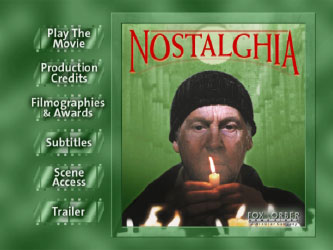 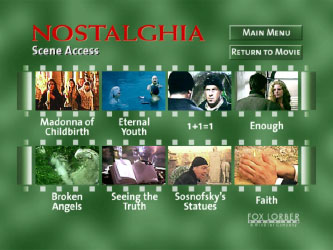 |
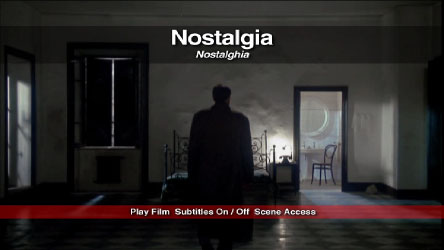 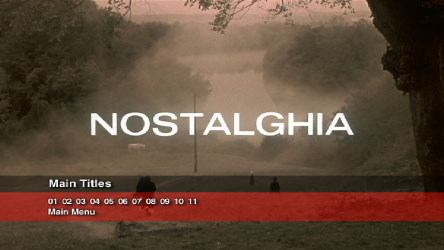 |
Frame 2
(Fox Lorber NTSC R0 top, Artificial Eye PAL R2 bottom)
 |
 |
Frame 3
(Fox Lorber NTSC R0 top, Artificial Eye PAL R2 bottom)
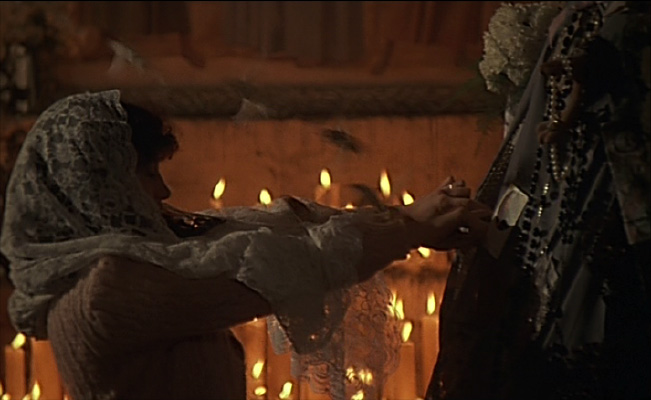 |
 |
Frame 4: Original Frame Sizes
(Fox Lorber NTSC R0 Letterboxed 720x540 top, Artificial Eye PAL Anamorphic 1024x576 R2 bottom)
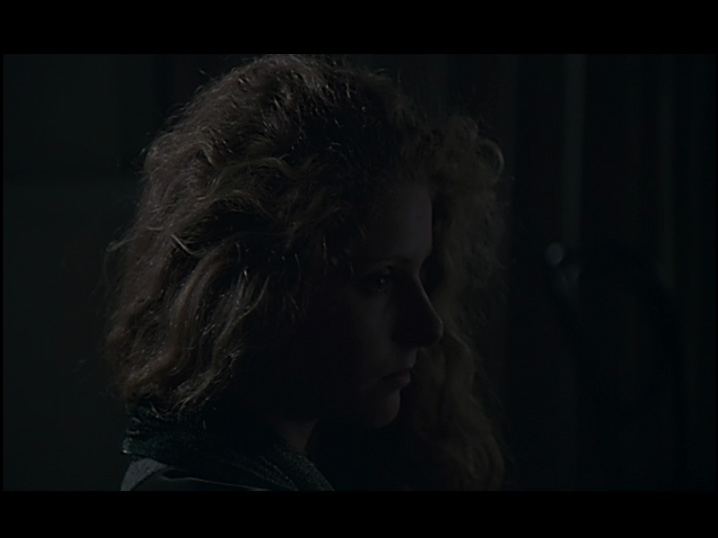 |
 |
Frame 5
(Fox Lorber NTSC R0 top, Artificial Eye PAL R2 bottom)
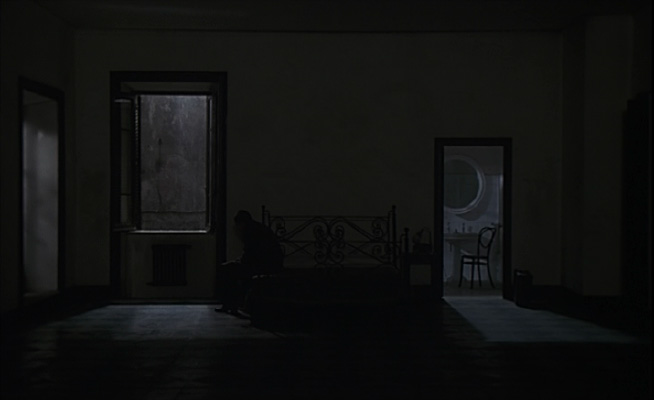 |
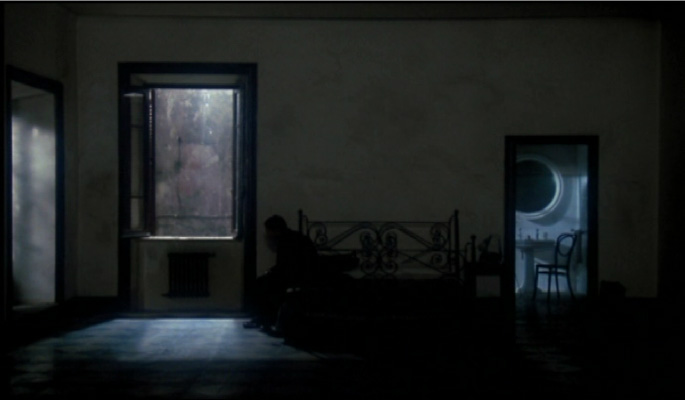 |
Frame 6
(Fox Lorber NTSC R0 top, Artificial Eye PAL R2 bottom)
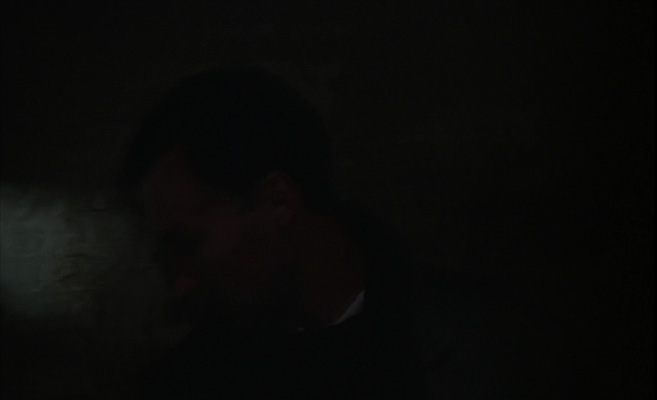 |
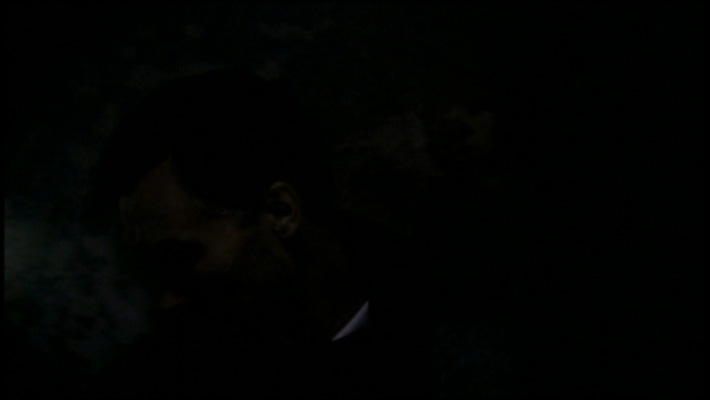 |
Frame 7
(Fox Lorber NTSC R0 top, Artificial Eye PAL R2 bottom)
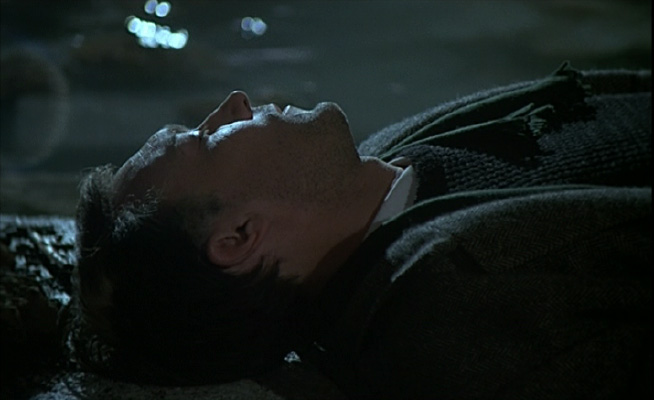 |
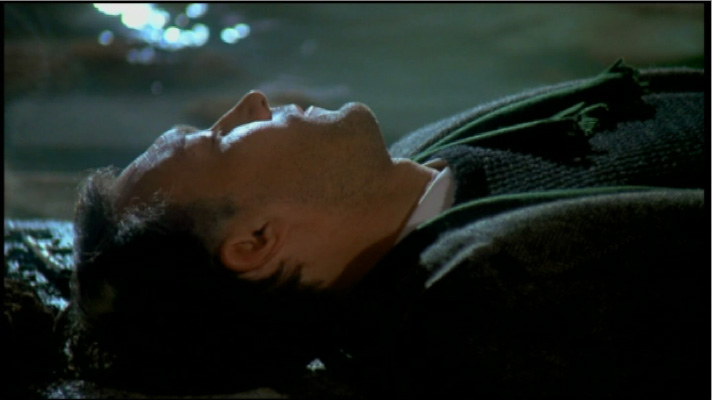 |
Frame 8
(Fox Lorber NTSC R1 top, Artificial Eye PAL R2 bottom)
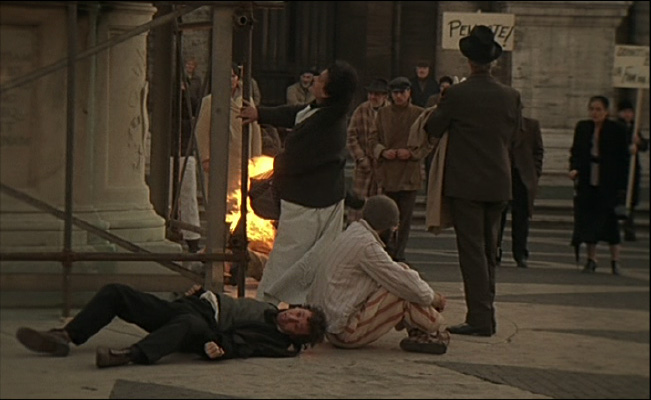 |
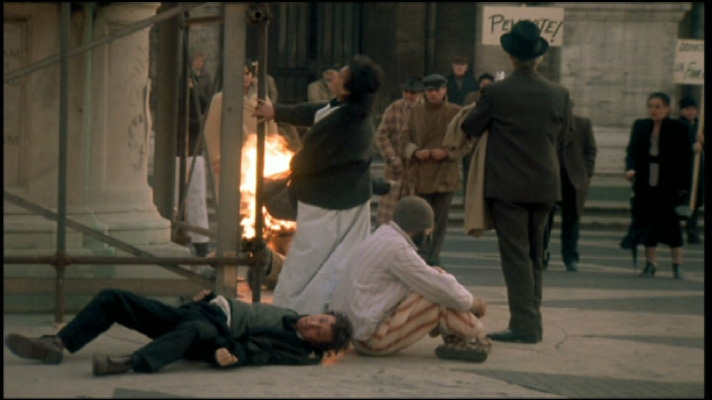 |
Frame 9
(Fox Lorber NTSC R0 top, Artificial Eye PAL R2 bottom)
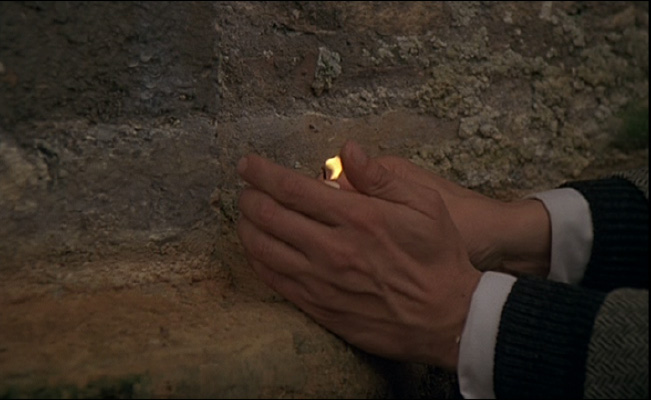 |
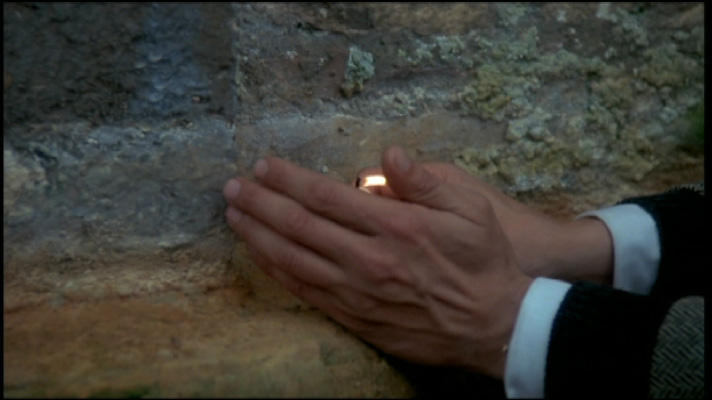 |
Frame 10
(Fox Lorber NTSC R0 top, Artificial Eye PAL R2 bottom)
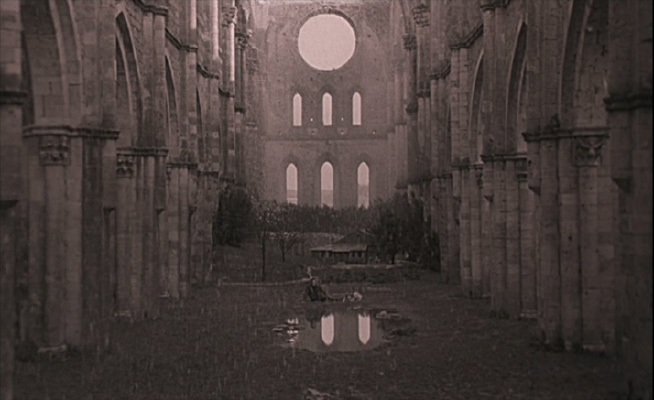 |
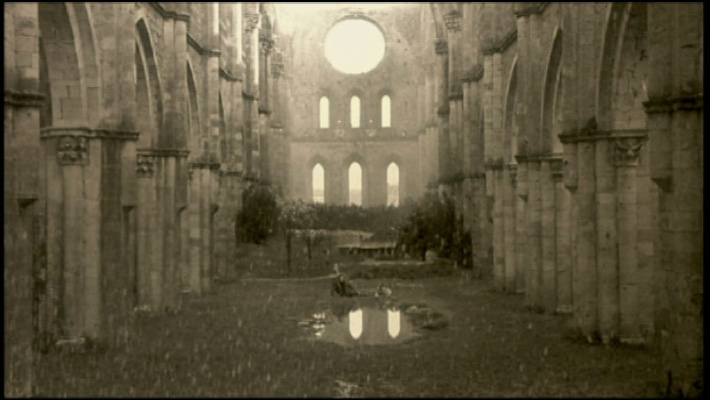 |
Average Bitrate Fox Lorber NTSC R0:
7.59 mb/s
No bitrate chart available
Average Bitrate Artificial Eye PAL R2:
4.49 mb/s
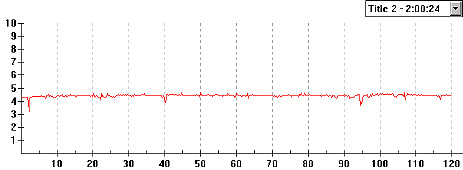
The Vertical axis represents the bits transferred per second. The Horizontal is the time in minutes
|
This is a strictly non-professional and non-commercial DVD review. Don't expect industry reference work! All ChiaroScuro captures are taken under MacOS X.2 using VideoLAN and Snapz ProX. For further methodological remarks see DVDBeaver (click on "Methodology"): "We are not a lab and are doing a good a job as our time and energy permits. Thank you for understanding." |






